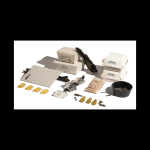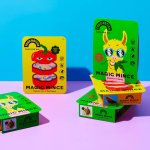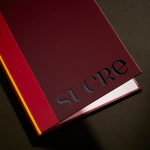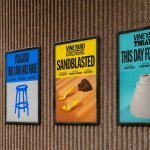ZVYK by .Oddity Studio
Most people agree that demarcations like ‘millennial’, ‘Gen Z’ and ‘Gen X’ are redundant – little more than age brackets created for the convenience of marketing teams which have become shorthand for a series of traits we’re expected to believe somehow define an entire generation. It’s curious, then, that for every diatribe against such groupings there’s at least ten more...

BP&O Voices
Mark Paton on Sustainability:
Materiality v Materialism: A Love Letter to Paper
A guest article and love letter to paper written by Mark Paton. BP&O Voices presents the opinions of industry experts on a wide range of topics....
Future Observatory by SPIN Studio
SPIN Studio continues its working relationship with the Design Museum (after branding its Waste Age exhibition in 2021 and Wim Crouwel’s first UK retrospective in 2011) by putting its inimitable spin (this won’t happen again, I promise) on Future Observatory, the museum’s ‘national research programme for the green transition’. Perhaps more so than any other studio working today, SPIN has...

Food Nation by Seachange
It’s about time plant-based brands found their sense of humour. Having been a vegan for 17 years now, I can safely say that veggie/vegan brands have historically been tiresomely dull – and until recently, they’ve been allowed to be. But with the recent years’ boom in all things ‘plant based’, simply existing because there’s no other type of soy milk...

Sucre by DutchScot
It’s always satisfying to see smart, bold new identity designs for a household name brand, often by one of the big name studios: things like the still-hyped 2021 JKR Burger King rebrand; Collins’ Girl Scouts revamp in 2022; Springetts’ fresh look for Ryvita that same year, which makes the much-maligned crispbread seem a lot more palatable. And while such projects...
Curve Club by Wildish & Co.
For a type-nerd (hello!) there are few things more seductive than a beautiful, beguiling letterform. But what makes such shapes even more siren-like is when they leap off the page and come to life, not just in motion, digitally; but in a physical environment. The branding for new private members club Curve Club, then, certainly ticks a lot of boxes...

BP&O Voices
Rich Baird on Design History:
INAX by PAOS, 1984
The context, concepts and considerations behind PAOS’ 1984 logo for Japanese tiles and bathroom company INAX....

Great Wrap by A Friend Of Mine
Cling-wrap, cling-film, stretch-wrap, Saran-wrap or food-wrap. Wherever you’re from and whatever you may call the ubiquitous, sticky, transparent stuff, it’s been keeping food fresh since 1949, when the first branded form of cling-wrap made from polyvinyl chloride (PVC) appeared on the market. Once held up as a mould-thwarting modern marvel, the material is now widely derided as an environmental menace....
Cohere by Pentagram
From Wes Anderson to ‘accepting the job’ and distinctly dystopian new romantic relationship models; in recent years, it’s felt like you can’t move for chat about AI – its weirdest uses, its hilarious shortcomings, and a hell of a lot of scare-mongering about it stealing our jobs. The platform that’s dominated much of the conversation is ChatGPT, an AI chatbot...
Unmind by Ragged Edge
In recent years, employers have been rushing to offer an increasingly elaborate range of workplace perks, from the WeWork style beer on tap approach to sleep pods (begging the question, if you have to sleep at work, is this really a perk at all?) to Ben & Jerry’s rather busman’s holiday-ish promise that employees can take home three pints of...
Ostro by Mucho
Ostro isn’t the easiest of companies to make sense of. Billed as a ‘life science software company’, it straddles a number of different services that are both consumer and clinician-facing. In simple terms, though, it looks to help consumers and healthcare providers alike to navigate the complex, labyrinthine ins and outs of the complex US healthcare system; using software to...

Vineyard Theatre by NB Studio
Much like identity work for art galleries and publishing houses, master brand design for theatre is often neutral, leaving plenty of space for a programme of diverse productions and eclectic marketing images to ‘take the stage’. When everything is in constant flux, there are typically some constants: a straightforward, recognisable wordmark, a distinctive typographic personality, and a consistently tight grid...